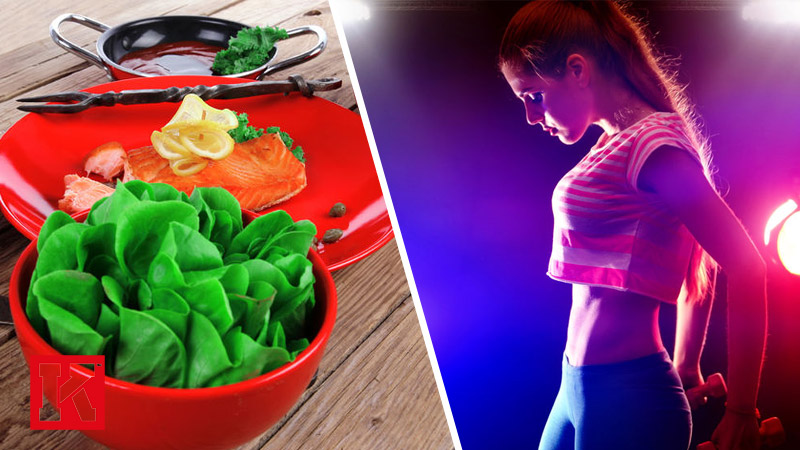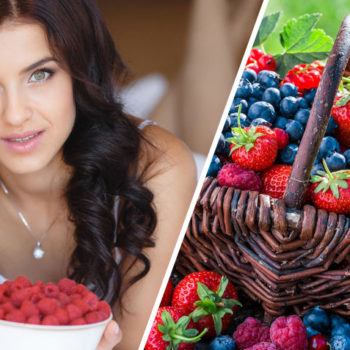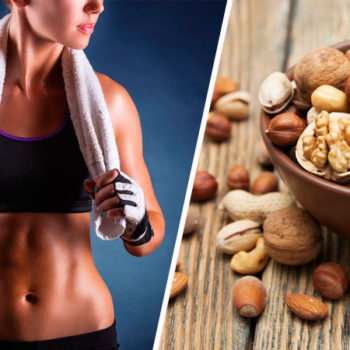How Does Color Affect Food Choice?

Do you ever find it strange how some color foods can turn you off the thought of eating, whereas others send you into a downward spiral of over-indulgence?
Color plays a big part in the choice of food we eat, and the way in which we perceive it’s taste. That can work in your favor, but it can sometimes work against you too – particularly if you’re trying to lose weight or drop body fat.
When you plan a fat loss diet you need to know as much as possible about the foods you eat in order to boost success. In this article we’ll take a look at research on how we are hardwired to choose foods based on their color.
Here’s what we’ll cover
- How color influences food choice
- Color and nutrient profile
- How color choice might affect how much you eat
Food Choice and Color
We are surrounded by color. It can affect our mood and motivation, our arousal and productivity. It can make us feel warm or cold, happy or sad. Visual stimuli is important in driving us and nature teaches us to make judgement based largely on what stimuli we are presented with.
These psychological and physical associations with color are often more powerful than the colors themselves – blues are calming, reds and oranges are exciting and full of energy. We might associate white with purity and black with a more sombre mood. Green of course reminds us of nature and health.
There’s an old saying – the first to feast is the eye. Food comes in a near limitless array of natural colors. These colors can affect our mood, our appetite and even the taste of food. Food color and its palatability are very much interconnected [1].
Studies have shown that color plays a key role in influencing taste thresholds, sweetness perception, food preference, pleasantness, and acceptability [2].
Color also tells us about the potential safety of the food we eat – when food goes off it may start to turn grey or brown. When food is burned it turns black. Foods which are high in nutrients are often bright and vivid. Research suggests that humans have an innate sense to distinguish safe foods from potentially toxic foods which is ingrained within our evolutionary development [3].
Nutrient Value and Color
The color of natural fruit and vegetables is provided by plant chemical or phytochemicals. There are thousands of these bioactive compounds and dependent on the color of the food is which you’ll find most of.
Blue and purple foods such as plums, blackberries and eggplant are high in the antioxidant anthocyanin that helps support healthy blood pressure. It also has a cardio-protective effect. Red foods such as strawberries, tomatoes and cherries are high in lycopene – another antioxidant that reduces cancer risk and overall body health. Undoubtedly, these nutrients help to boost and maintain overall health so it’s important to eat a variety of colors.
Phytochemicals also provide us with vital information about the health of the food, readiness to eat, and more importantly when it’s past its best. It helps to guide us in making informed decisions about what we eat.
According to a recent study published in Scientific Reports [4] our visual system evolved in order to identify nutritious fruits, vegetables and other energy dense foods such as honey. Being able to spot food from a distance gave us an evolutionary advantage and helped to steer our development.
According to the study, humans see foods with trichromatic vision – the light sensitive part of the eye that allows us to see different colors throughout our visual spectrum – and we are particularly adept at differentiating between red and green.
Unprocessed red foods are often high in nutrients, calories or high-satiating protein, whereas greens are often nutrient dense but much lower in calories. Interestingly, the big benefit of this visual field is that as color is a good indicator of nutrients, food quality and density, we are able to seek out calories.
The study suggests that we are much more likely to overindulge red foods rather than green, based on this fact.
Food Color, Calories and Weight Loss
Food marketing is a big industry – more and more time is being spent on packaging imagery and color combination in order to entice you into buying the product. Marketers use color presentation techniques in order to communicate visually with you and influence your purchase [5]. We often associate packaging color with quality.
Couple that with the fact that trichromatic vision forces us to seek out foods that are high in calories based on their color and you’ve got a recipe for potential over-consumption of calories.
Ultimately, weight loss comes down to manipulation of energy expenditure – eat less than you burn off and you start to drop body fat. Eat more and you’ll gain. Being aware of visual marketing and food choices are an important part of any calorie-controlled eating plan.
Eating based on informed choices, good planning and not ‘eating with your eyes’ will help you stick to your diet and achieve your body composition goals.
Using Colored Plates
In the 1800s, a Belgian philosopher called Franz Delboeuf coined the Delboeuf illusion [6]. This is the idea that two identical sized objects appear bigger or smaller based on the size or color of the object they are placed on. So by manipulating the color of a plate against the food you are eating will influence how much of the food you actually eat.
The use of color can work both ways – as much as it helps you to seek out high-calorie foods, it can also be used to influence satiety too. Here’s a little tip you can employ if you are wanting to cut back on the calories:
Studies have found that you are more likely to eat more if the color of your plate matches that of the food you are eating and less if it contrasts. So make sure that the food you eat is on a different color plate.
Additionally, if you can’t avoid the same color plate and food then simply place a contrasting tablecloth underneath – can be just as useful as it tricks your eyes into thinking your food fills more of the plate, helping you to eat less and feel fuller sooner.
Summary
Color can influence our mood, motivation and productivity. It can also effect the types of foods we choose to eat too. The visual perception that we have developed helps us to seek out what we consider to be the more high-energy foods using a process of trichromatic vision.
Color also gives us an idea of the nutrient value of foods – fruit and vegetables that are high n phytochemicals are vibrant and brightly colored. These bioactive compounds provide us with essential nutrients that improve health and reduce risk of illness and disease.
Being aware of the influence of color helps us to better control our calorie intake. Using plate colors for example that contrast with the food you are eating, makes it appear that you have more on your plate – it can boost feelings of fullness too. This in turn can help you control how much you eat and support your weight or fat loss goals.



